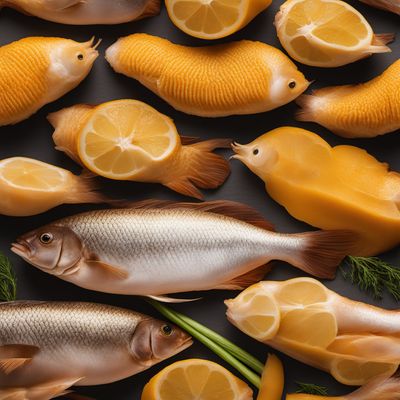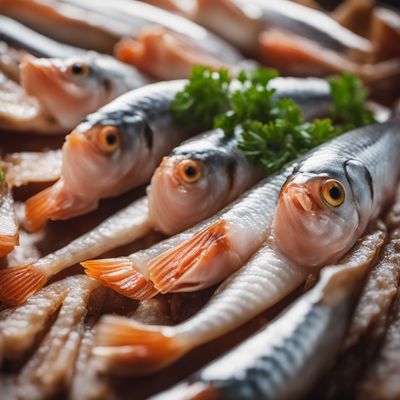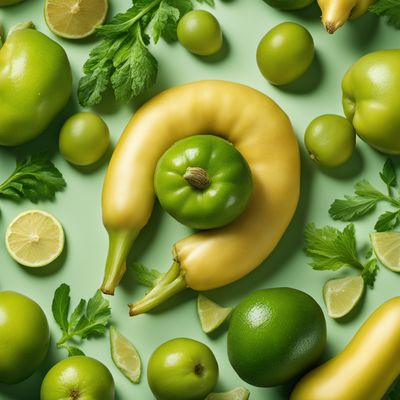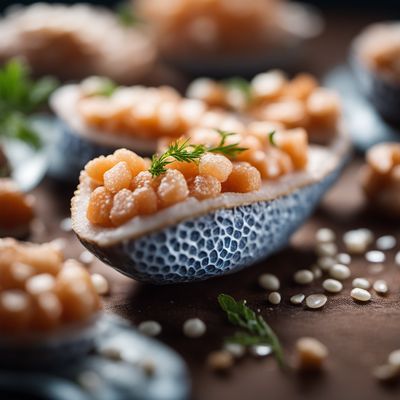
Ingredient
Barracudas
The Fierce Predator of the Sea
Barracudas are elongated fish with a streamlined body, silvery scales, and a large mouth filled with sharp teeth. Their flesh is firm, lean, and white, with a mild flavor and a slightly sweet undertone. The texture is meaty and flaky, making it ideal for grilling, baking, or pan-searing. However, caution must be exercised when consuming barracudas, as some species may contain high levels of mercury.
Origins and history
Barracudas are found in warm waters around the world, particularly in the Atlantic, Indian, and Pacific Oceans. They have a long history of being both feared and respected by fishermen and divers due to their aggressive nature and powerful jaws. In some cultures, barracudas are considered a symbol of strength and resilience.
Nutritional information
Barracudas are a good source of lean protein, omega-3 fatty acids, and various vitamins and minerals. They are low in saturated fat and calories, making them a healthy choice for seafood enthusiasts. However, due to their position in the food chain, barracudas may accumulate mercury, so consumption should be limited.
Allergens
Barracudas may contain high levels of mercury, which can be harmful if consumed in excess. Pregnant women, nursing mothers, and young children should exercise caution and limit their intake of barracudas.
How to select
When selecting barracudas, look for fish with clear, bright eyes, shiny skin, and a fresh, mild aroma. The flesh should be firm to the touch and have a vibrant white color. Avoid fish with dull eyes, discolored skin, or a strong fishy smell, as these are signs of poor quality or spoilage.
Storage recommendations
To maintain the freshness and quality of barracudas, store them in the refrigerator at a temperature between 32°F and 38°F (0°C and 3°C). Keep the fish wrapped in moisture-proof paper or plastic wrap to prevent drying. Consume within 1-2 days of purchase for optimal flavor and texture.
How to produce
Barracudas are typically caught in the wild, making them challenging to produce on a small scale. However, for those with access to suitable waters, barracudas can be cultivated in large tanks or ponds with proper care and feeding.
Preparation tips
Barracudas can be prepared in various ways, including grilling, baking, broiling, or pan-searing. Their firm flesh holds up well to high-heat cooking methods, allowing for a crispy exterior and a moist interior. Marinating the fish in citrus juices or a flavorful sauce can help tenderize the meat and enhance its taste. Barracudas are often served with fresh herbs, tropical fruits, or tangy sauces to complement their mild flavor.
Culinary uses
Barracudas are commonly used in tropical and coastal cuisines, where they are featured in dishes such as ceviche, grilled barracuda steaks, or fish tacos. Their firm texture and mild flavor make them versatile for various preparations, from simple grilled fillets to elaborate seafood stews.
Availability
Barracudas are commonly found in tropical and subtropical regions around the world, including the Caribbean, the Mediterranean, and the Indo-Pacific. They are particularly abundant in areas with coral reefs and warm waters.
More ingredients from this category » Browse all

Cobia
The Versatile Fish: Cobia

Dolphinfishes
The Versatile Delight

Mackerels, jack and horse mackerel, scads
The Flavorful and Nutrient-Rich Catch

Butterfish
"The Delicate Delight: Unveiling the Secrets of Butterfish"

Garfish
The Sleek and Versatile Garfish

Pomfret, Indo-Pacific
The Ocean's Delicacy

Horse jack
Equine Delicacy

Pomfret, atlantic
The Ocean's Delicacy: Atlantic Pomfret

Bluefish
"The Bold and Flavorful Bluefish: A Seafood Delight"

Amberjack
The Versatile Ocean Delight

Pompanos
The Versatile Delicacy: Pompanos

Capelin
The Tiny Fish with Big Flavor: Exploring the Delights of Capelin